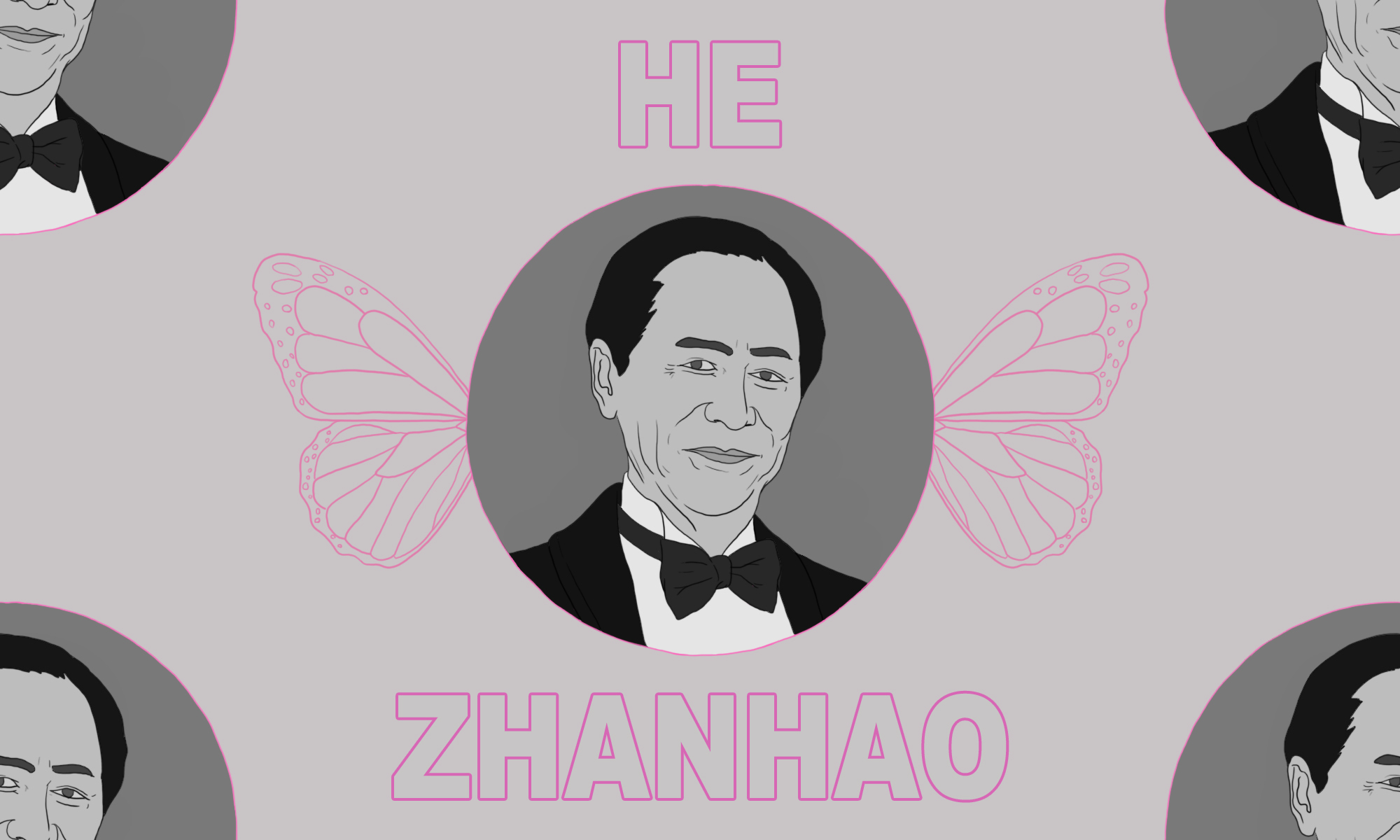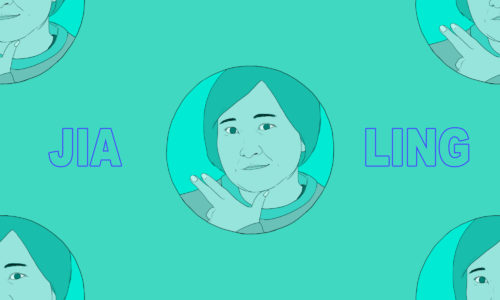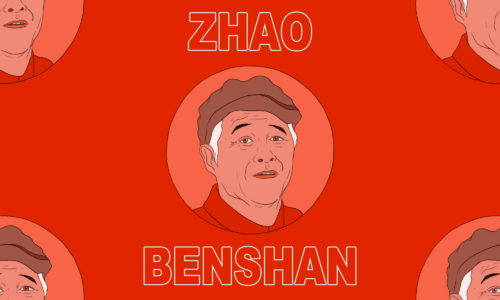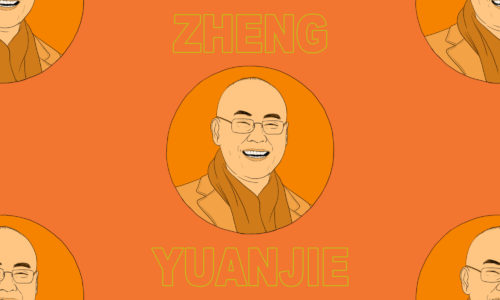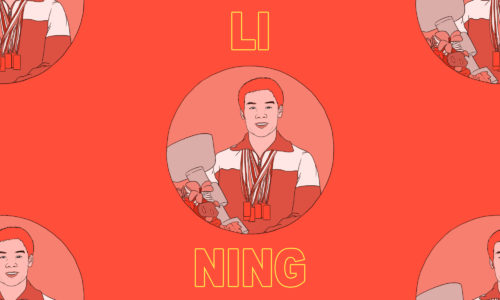Classical music has given birth to many earworms, works of genius so original they have become part of the background noise of everyday life — the thunderous opening eight notes of Beethoven’s Fifth, or the arpeggios of Mozart’s Eine Kleine Nachtmusik. Chinese ears would include “The Butterfly Lovers’ Violin Concerto” (梁祝小提琴协奏曲 liángzhù xiǎotíqín xiézòuqǔ) on this list, whose distinctive signature melody has made its way out of the concert hall and melded into the fabric of Chinese life, from doorbells to the backing ambiance of public service announcements.
But it’s more than mere muzak. Upon its first performance in 1959, it was a bold synthesis of Western orchestral tradition and Chinese folk opera. It aimed to give China its own unique form of classical music and make the genre more appealing to the masses. And the man who merged this tale of two ancient lovers with Western orchestral piece? That would be Hé Zhànháo 何占豪.
Who were the Butterfly Lovers?
The concerto tells the story of Liang Shanbo and Zhu Yingtai, China’s archetypal tragic romantic couple, the Romeo and Juliet of the Middle Kingdom. Their tale is one of the great folktales of the nation, especially well known in the south.
Although there are many variations, they roughly follow the same pattern. Zhu is the daughter of a wealthy merchant, allowed an educated upbringing. She begs her father to send her to school and, like a scholarly Mulan, disguises herself as a boy to sneak into this patriarchal world undetected.
On the trip there she meets classmate Liang Shanbo, the two gradually becoming close friends during their studies. Liang (despite sleeping in the same bed as Zhu) never apparently realizes Zhu is a woman, despite several heavy hints from her once she realizes she has fallen in love with him.
Things become urgent when Zhu’s father orders her to return home, so she tells Liang that he must visit her family courtyard and marry Zhu’s “sister.” Once Liang is finally made aware of his best friend’s true identity, the two pledge their love to each other.
But Zhu is forced by her parents to marry a wealthy merchant. Filled with grief, Liang dies alone in his position of a poor official. Zhu orders her wedding procession to visit his grave so she can pay her respects. Suddenly overcome with grief, she prays to be able to join him. Liang’s grave opens with a crack of thunder, and she flings herself inside. She and Liang are then transformed into two butterflies, now forever able to stay together.
The story has been doing the rounds amongst Chinese audiences since at least 700 A.D., when the first written mention of it is documented. The lovers’ metamorphosis after death was added during the Ming dynasty. By the turn of the 20th century the story was well-known, enshrined in the popular Yue opera of Zhejiang and Shanghai. This opera survived the transfer into the early People’s Republic of China (trimmed of superstition and vulgarities), with Mao personally ordering for it to be made into a color film in 1952.
Who is He Zhanhao?
A gifted and innovative musician who used the Butterfly Lovers’ Violin Concerto to advance the development of Chinese classical music.
He Zhanhao grew up in Zhejiang in the 1930s, the son of a poor Yue opera performer. Also known as Shaoxing opera, this local opera allows women to play men and uses the vernacular and folk songs of rural Zhejiang. Such accessibility guaranteed popularity. He Zhanhao proudly noted in an interview that it was a grassroots operatic style, created rurally by “the sons and daughters of farmers” in Zhejiang before moving to the big city of Shanghai. He Zhanhao would listen to his father and grandmother’s singing performances year after year. It was to this background (coupled with the songs of his aunts when they returned home during the War against Japanese Aggression) that He attributed his knack for Chinese musical styles.
He’s father, believing his son deserved a better life than himself, borrowed some money and packed him off to a high school in Hangzhou. From there, He Zhanhao would graduate into the Shanghai Conservatory of Music, learning the violin.
Meanwhile, China was trying to find its feet in the world of symphonies and concertos. Since the 1930s, Chinese composers had returned from the West claiming that China must abandon old music and learn “superior” musical forms — the tide of emotions Western pieces could arouse would be essential to forging the nation and raising national morale and morality. By 1956, Mao was declaring musicians studying Western music “treasures” to be heeded, in his “Talk to the Leaders of the Musicians’ Association.” Their knowledge would benefit China, but he warned against neglecting Chinese music: “Of course we favor music with a national character.”
This wasn’t new. In the 1920s, erhu player Liú Tiānhuá 刘天华 had transferred Western tunes and patterns to Chinese erhus.
But He Zhanhao would try something different. In the mid-1950s, when young musicians such as himself were sent out into the countryside to play their repertoire for the peasantry, it was a flop. “I play it and they listen. I ask if it’s good and they all nod their heads. I ask if they understand, they all say no,” He recounts in Rhapsody in Red: How Western Classical Music Became Chinese. “But they love to hear Yue opera! Of course, the violin is very special and beautiful. So, this influenced our thinking — how could we use folk music with the violin? How could we nationalize the violin?” It appeared that the way to get classical music to serve the people was to use the music they were familiar with: in this case, Shaoxing opera.
But at the same time, there was a problem. To play the violin, with its complex sets of scales, as if it were a two-stringed erhu was at best “vulgar” (according to fellow students), at worst impossible, given the anatomical differences of the two instruments. He Zhanhao began studying Western theory by day and Yue opera by night, learning how to transcribe the Chinese pentatonic musical scale, slow sliding notes of the erhu or the trills of opera singers, onto a Western violin. Conservatory students played to audiences in factories and villages to see what was enjoyed and what wasn’t. Together with Western orchestral specialist Chén Gāng 陈钢, in his first year (at just 24) He Zhanhao was assigned by his professor to present a piece of work that was suitable to the new non-elitist, non-feudal regime. It was meant to celebrate the 10th anniversary of the PRC.
Although He was reluctant to do so, given his relatively small amount of experience, he gave the assignment his best shot. What better way to celebrate the PRC than with a popular everyday folk tale, where backward feudal views about marriage caused the destruction of two diligent young people? He Zhanhao would write the initial tune, play it to Chen on the violin, who would then provide feedback and set it to a piano accompaniment. The piece utilized Chinese musical storytelling motifs — establishing the landscape and setting before introducing the characters — and the Yue tradition of qǔpái 曲牌 — where melodies are relatively similar but with infinite complex variations. Initially, the pair skipped the scene where the couple transforms into butterflies, believing it too superstitious. But their professors laughed, saying that as it came from the people, it was what the people would enjoy to hear most.
It was an instant hit at Shanghai’s Lyceum Theater. “It was the only time in my life I was asked to play a whole piece twice in one performance,” remembered Yú Lìná 俞丽拿, the piece’s original violinist. Although some radicals criticized using a feudal legend for a concerto, People’s Daily gave it an article headlined “Our Own Symphonic Music.” Such endorsement on the national stage guaranteed it a concert in the Great Hall of the People for its 50th Anniversary. But (aside from the Yellow River Cantata), Butterfly Lovers remains the only Chinese piece of classical music to have gained a firm footing in the minds of Chinese — and, perhaps, the international musical community.
For Jindong Cai (co-author of Rhapsody in Red and director of the U.S.-China Music Institute at the Bard College Conservatory of Music), the innovations of Butterfly Lovers “is very significant in the development of China’s own symphonic music.” But he goes on to argue that the concerto’s wider success was merely a case of being in the right place at the right time. Despite He’s quest throughout his career to compose works that “add Chinese flavor to foreign musical forms and introduce modern features to Chinese traditional music,” these works are nowhere near as famous in China. It’s for the Butterfly Lovers that this octogenarian will be remembered. He’s been asked to conduct it frequently on special occasions, with multiple variations written for erhu, piano, and the pipa.
Humble He doesn’t seem to mind, telling reporters that ultimately, the piece was “originally created by our farmers in Zhejiang!” After all, it was they who had been his sounding board during trial runs, they who tweaked the tunes of Yue opera over centuries in the first place. By this logic, the very essence of China runs through the concerto.
Chinese Lives is a weekly series.
